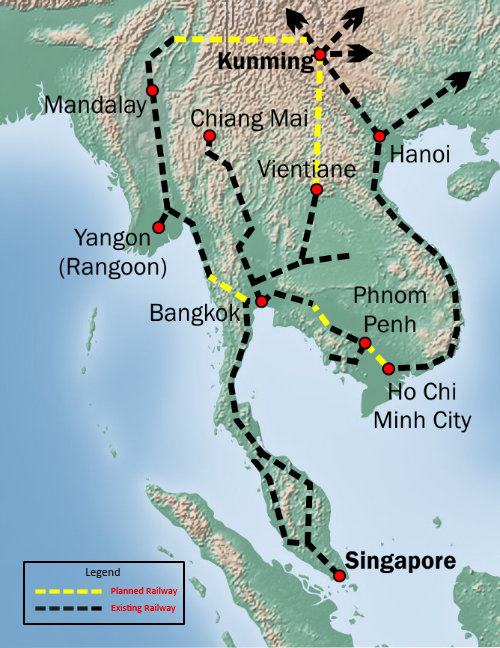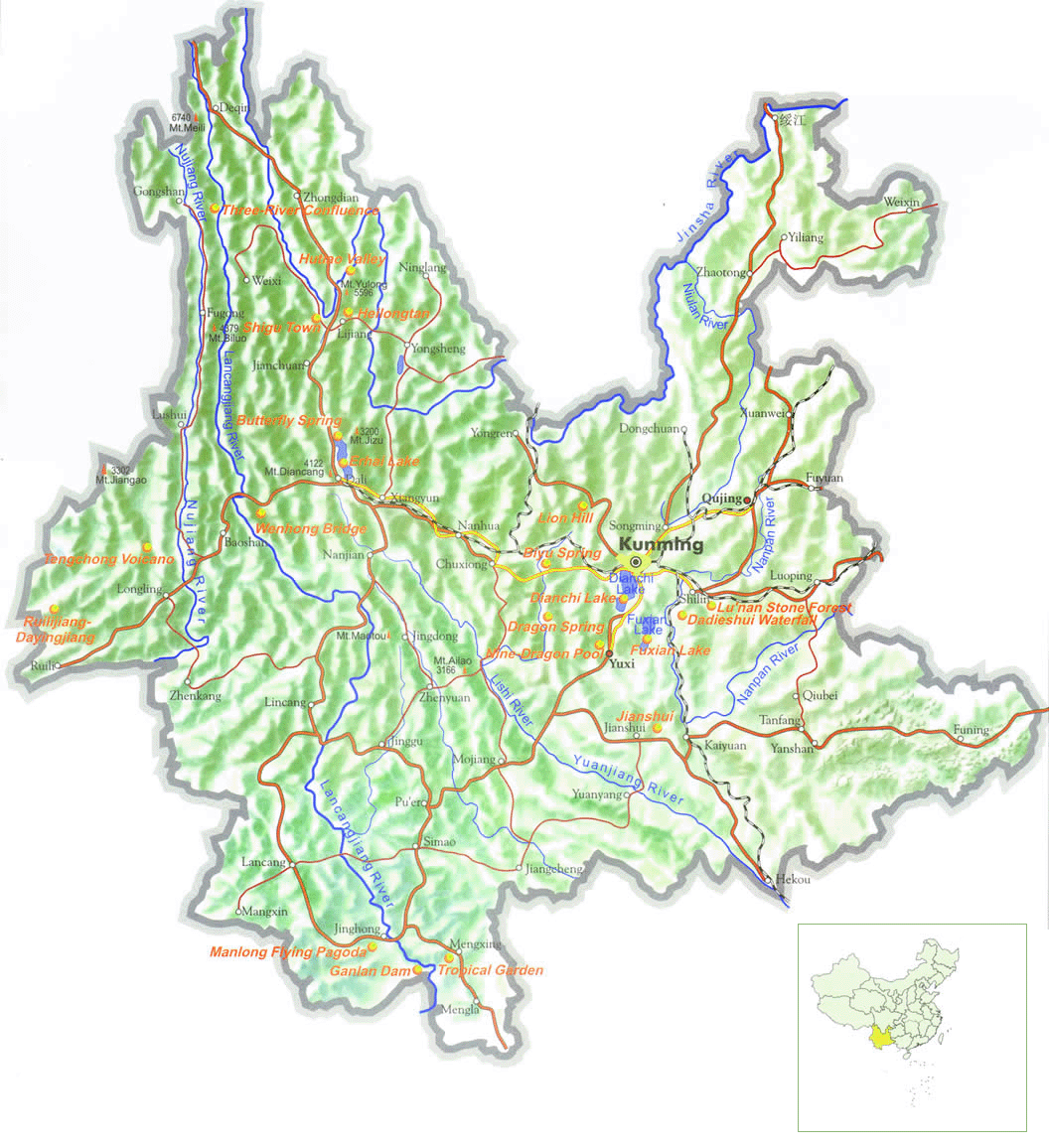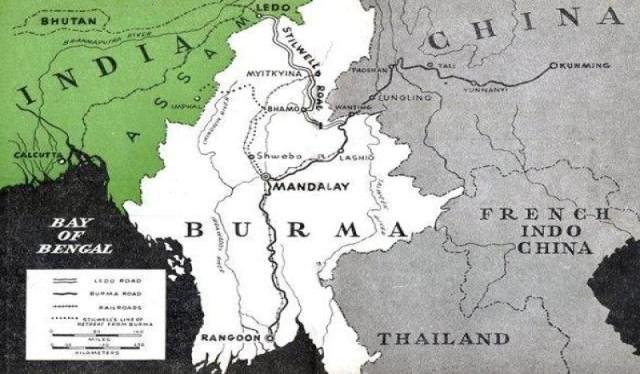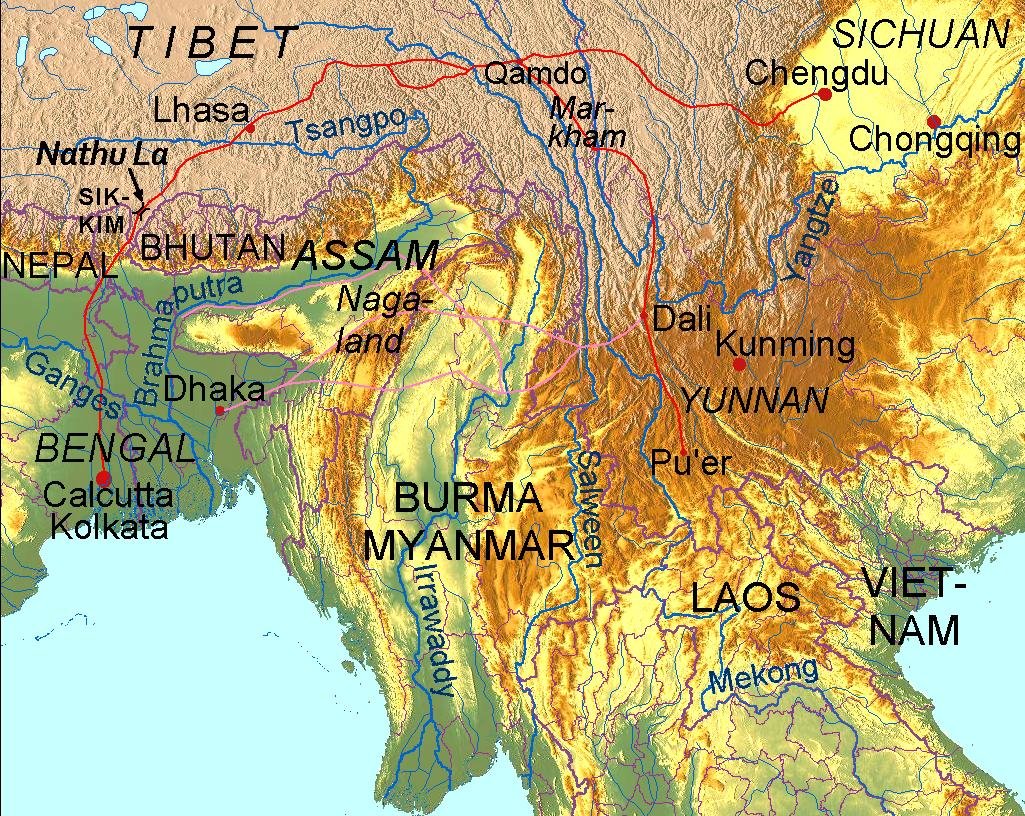
The transport infrastructure of Yunnan is served by numerous transport modes, and forms an integral part of the structure Yunnan Province and Southwest China. Yunnan is served by several civilian airports, a major highway and rail network as well as a network of frequently operated bus routes. Yunnan's transport infrastructure radiates from its hub and capital city, Kunming, which at the same time acts as an important gateway, linking China to Southeast Asia, South Asia and the Asia-Pacific region. Most visitors to Yunnan travel by plane or bus. However, railway and river travel is also possible. Train travel requires much more time than air or road travel but is more comfortable, especially on overnight lines.
Railway
Yunnan was first connected by railway not to the rest of China, but to the Vietnamese port of Haiphong by a French engineered narrow gauge railway, the Sino-Vietnamese Railway completed in 1910. This railway is not in use anymore though and was substituted by a bus line to Heikou at the Vietnamese border. Plans are underway on modernizing the old line to Vietnam, the line from Kunming to Mengzi via Jianshui already exists. It took another fifty years for the province to be connected by rail to the rest of China with the completion of the Chengdu–Kunming line. Later a line connecting Kunming to Guiyang followed. Two further lines have been added recently: a southern line connecting Nanning in Guangxi and a north-eastern line connecting Yunnan to Sichuan via Yibin.
An extension also links Kunming to Dali and further to Lijiang to the northwest.
There are a lot of railway construction and further extension plans for both, national and international train traffic. For example the connection to Yunnan's north (Shangri-La), to China's highspeed railway system (from Kunming to Shanghai) for which specifially a new railway station is already being built in southern Kunming or the line from Kunming all the way to Singapore, with connections to the other South East Asian countries.

Check out more useful and up to date information related to railways in China and Yunnan.
Road
Road construction in Yunnan continues unabated: over the last decade the province has added more new roads than any other province in China. Which sounds pretty devastating at first, turns out to be quite handy when travelling overland. Many smaller villages throughout the province have only been reachable by foot or horse not too long ago.

Also in terms of highways, Kunming is the hub. Today expressways link Kunming to all directions:
-
through Dali to Baoshan (western Yunnan)
-
to Lijiang (northernwestern Yunnan)
-
to Zhaotong (northeastern Yunnan
-
through Shilin to Wenshan (eastern and southeastern Yunnan) and
-
to Jinghong (southern Yunnan)
The official plan is to connect all major towns and neighbouring capitals with expressways and to complete a high-speed road network by 2020.

But Yunnan is not only famous for its expanding highway network but also for its ancient routes.
Burma Road
The Burma Road was a highway extending about 1150 kilometres through mountainous terrain from Lashio, northeast Burma northeastward to Kunming. Undertaken by the Chinese and Burmese after the start of the Sino-Japanese War in 1937 and completed in 1938, it was a vital transportation route for wartime supplies to the Chinese government from Rangoon and shipped by railroad to Lashio from 1938 to 1946. An extension runs east through China from Kunming, then north to Chongqing. This traffic increased in importance to China after the Japanese took effective control of the Chinese coast and of Indochina. It was seized by the Japanese in 1942 and reopened when it was connected to the Stilwell Road from India. The Ledo Road (later called the Stilwell Road) from Ledo, India, into Myanmar was begun in December 1942. In 1944 the Ledo Road reached Myitkyina and was joined to the Burma Road. Both roads have lost their former importance and are in a state of disrepair. The Burma Road's importance diminished after World War II, but it has remained a link in a 3,400-km road system from Yangon, Myanmar, to Chongqing.

Old Stillwell and Burma Road Map. A great choice of Burma Road maps can be found here.
The Tea Horse Road
The Tea Horse Road, was a network of mule caravan paths winding through the mountains of Sichuan, Yunnan and Guizhou. The network first emerged in significant terms during the Tang dynasty (618–907), reaching its zenith during the late-Qing period (1790s to 1911) and the first half of the twentieth century. The route was a trade link from Yunnan's southeast (Pu'er and Xishuangbanna) as well as from Sichuan (around the area known as Ya'an) with the tea-consuming regions across China, but in particular with Tibet and furtheron to India (see map below). It is believed that it was through this trading network that tea (typically tea bricks) first spread across China and Asia from its origins in Yunnan. The Tea Horse Road earned its name because of the common trade of Tibetan ponies for Chinese tea, a practice dating back at least to the Song dynasty, when the sturdy horses were important for China to fight warring nomads in the north.

Waterways
Generally, rivers are obstacles to transport in Yunnan. Only small parts of Yunnan's river systems are navigable. However, China is constructing a series of dams on the Mekong to develop it as a waterway and source of power; the first was completed at Manwan in 1993. At present, along the Jinsha River (upper Yangtze) and the Lancang River (the Chinese part of the Mekong), the length of intra-province waterways in operation approximates 1500 km. Major ports include Guanlei, Shuifu, Suijiang, Jinghong, Simao, and Dali. In June 2001, commercial shipping service among China, Laos, Myanmar, and Thailand on the Lancang-Mekong River was officially inaugurated. River cruises along the Mekong from Xishuangbanna to the Golden Triangle, Laos and Thailand are possible but due to security reasons only on a limited basis.
Airports
Yunnan is home to more than 10 active civil airports (2014). A number of further airports are either being planned or already under construction, among others the Lugu Lake Airport. From Yunnan mainly domestic routes are flown but also international connections from Kunming and Xishuangbanna are available. For more information please check our Flying in China article.
- 2014 reads
